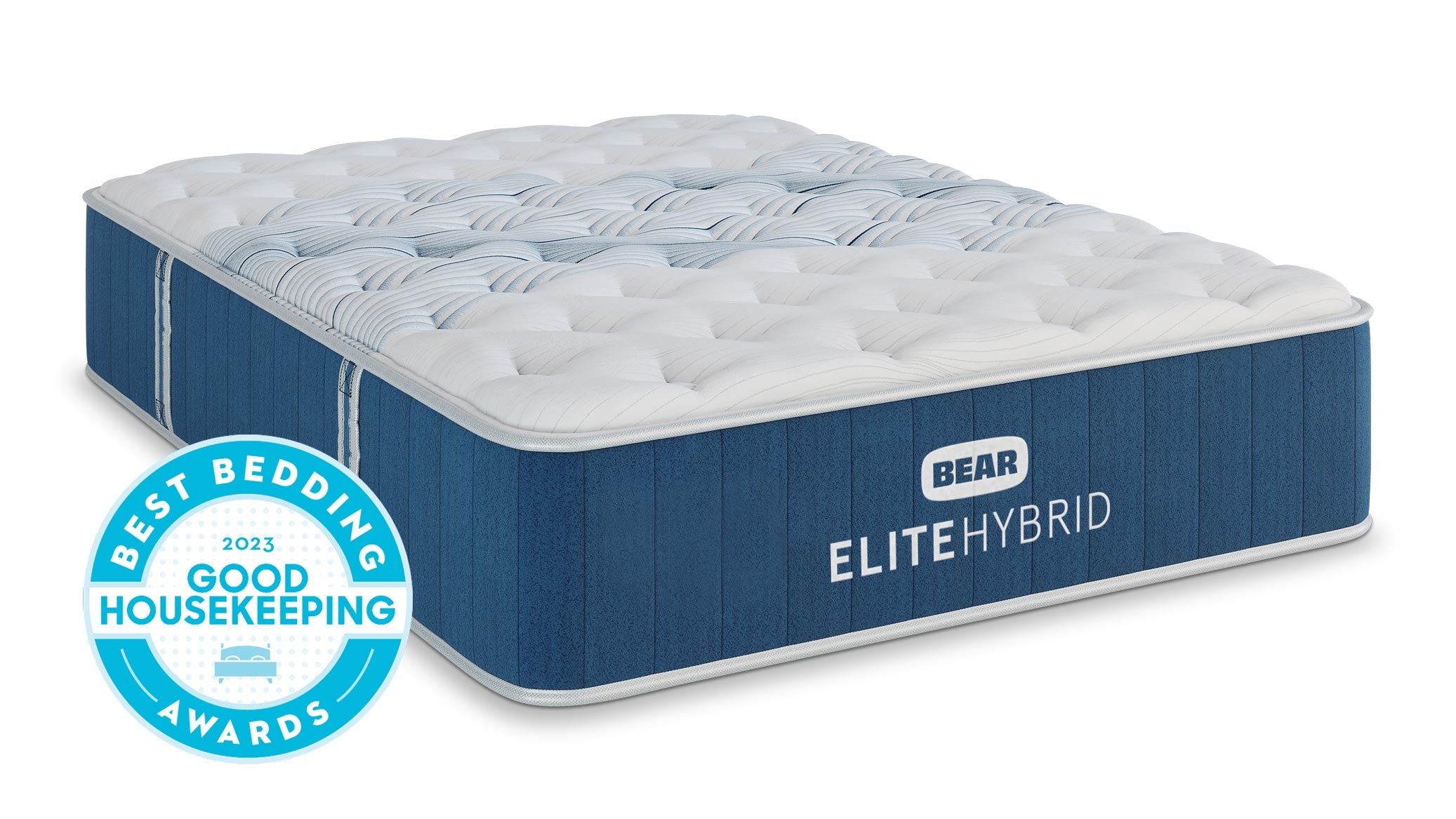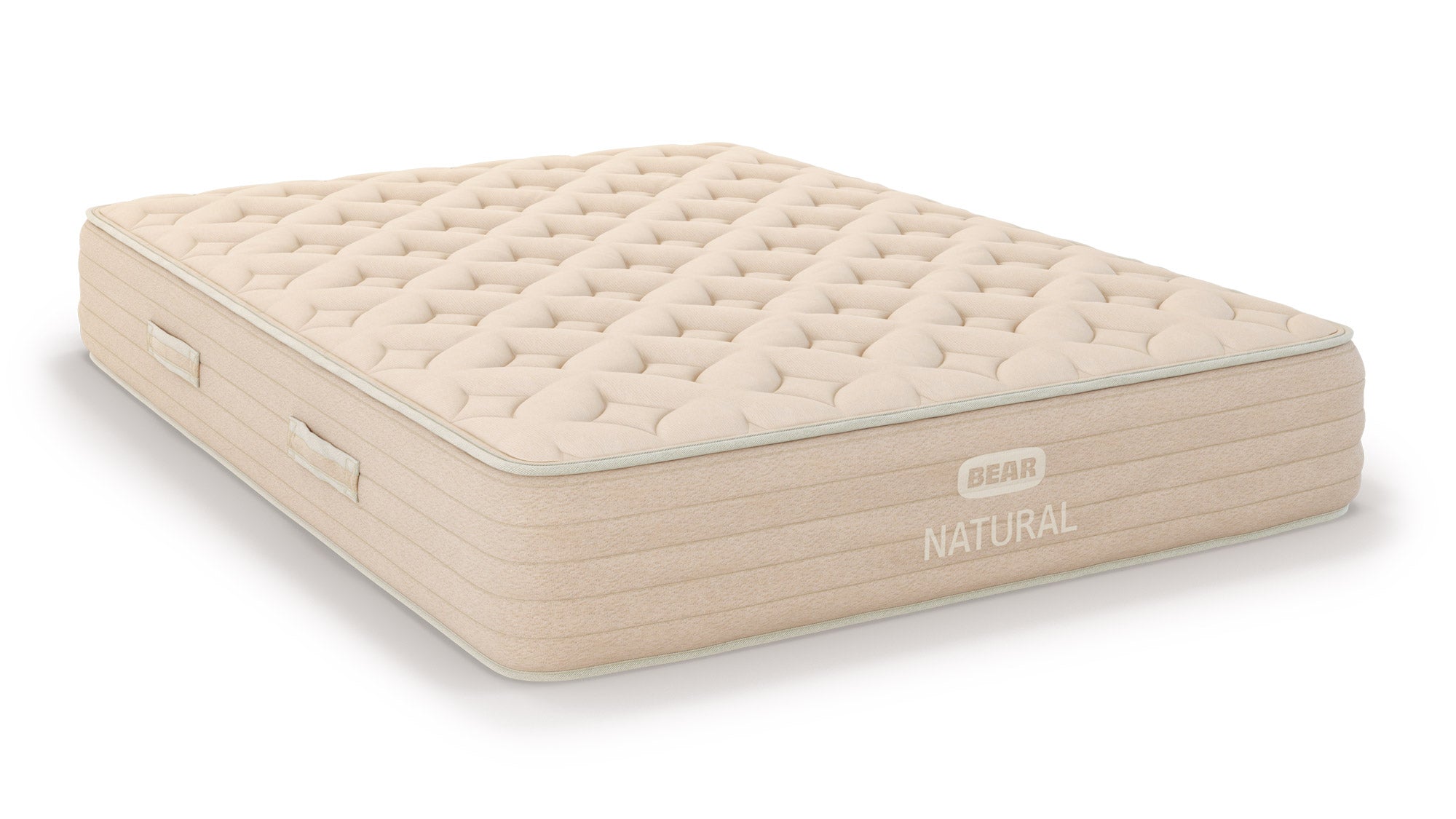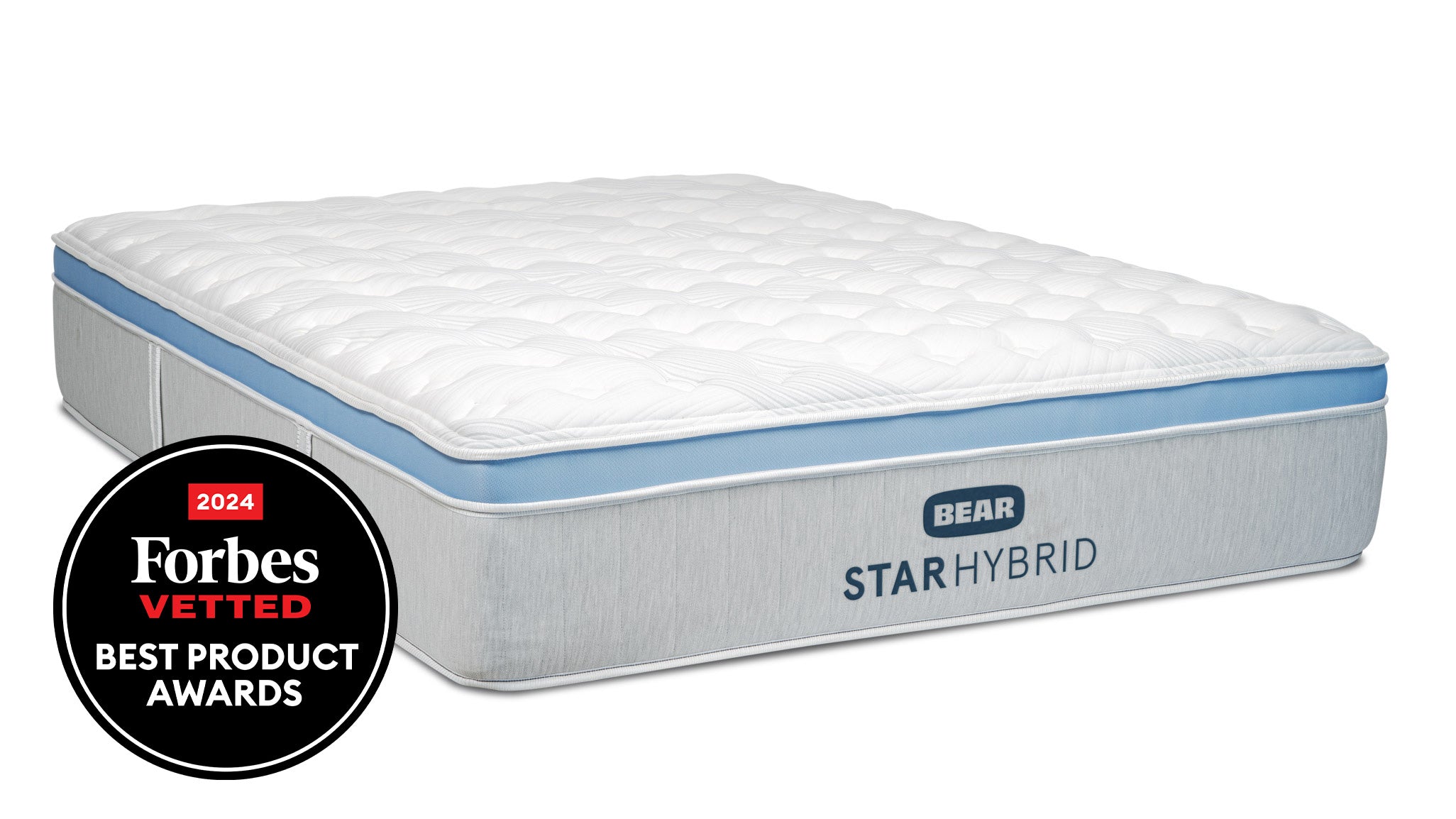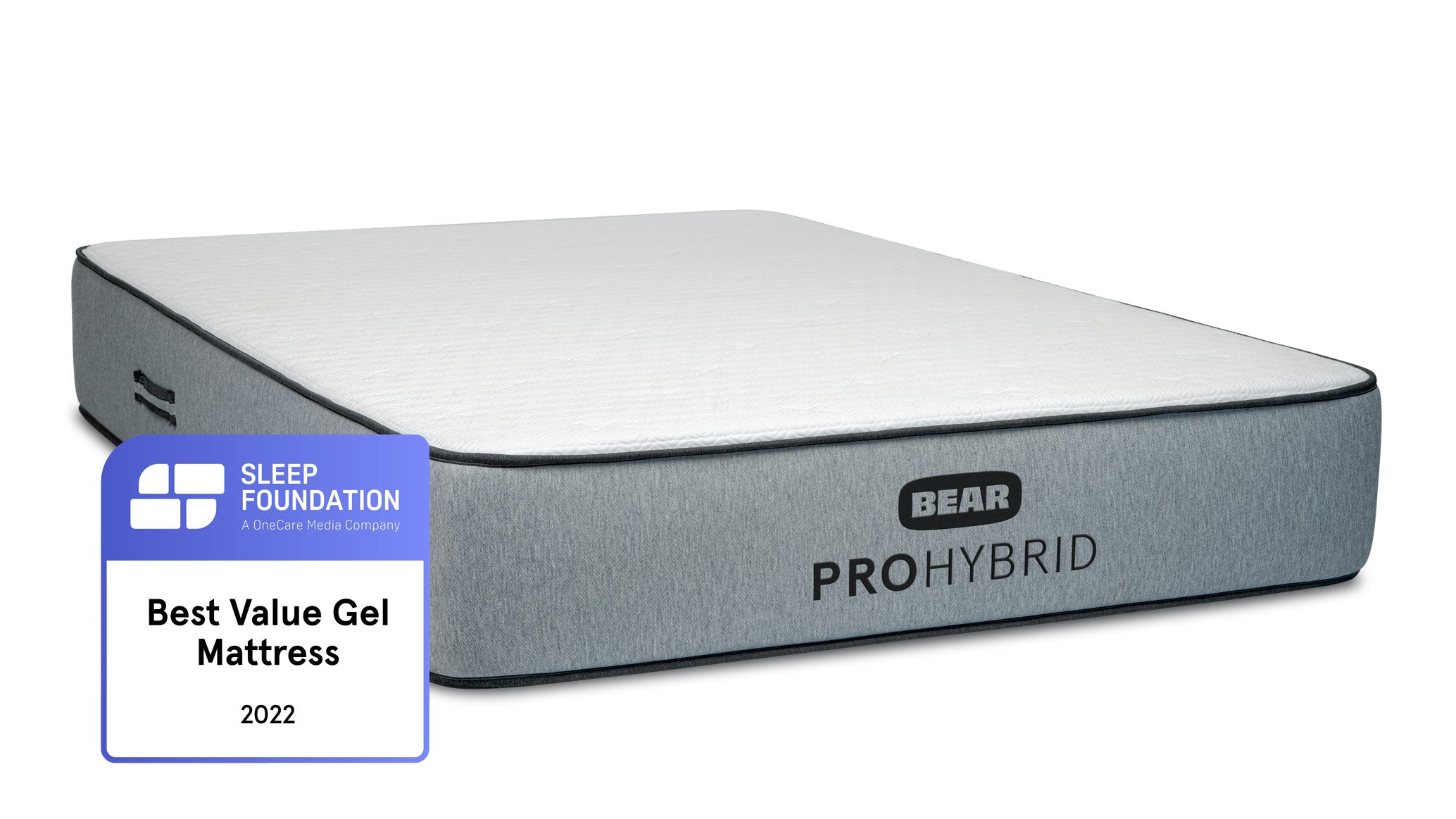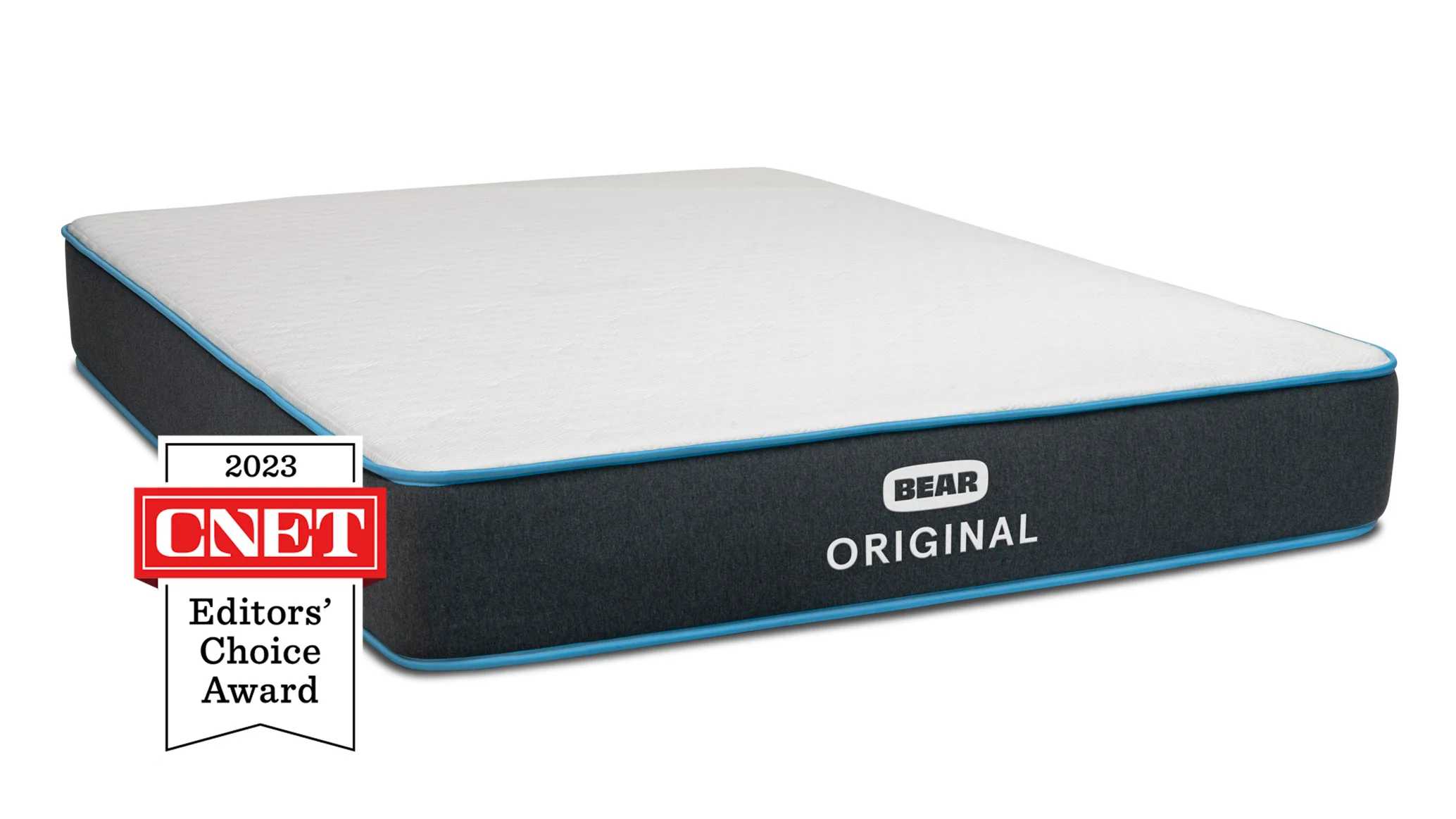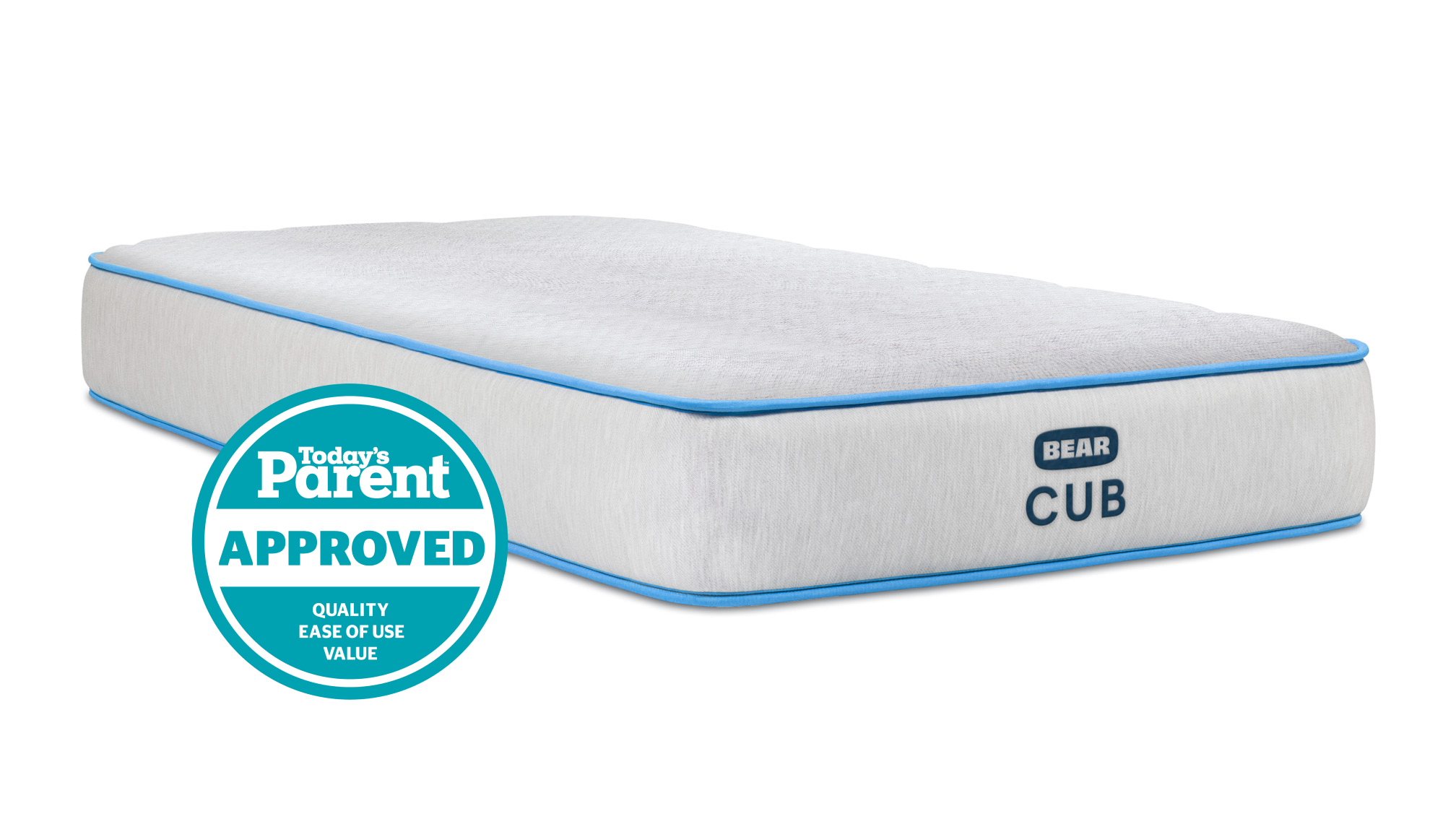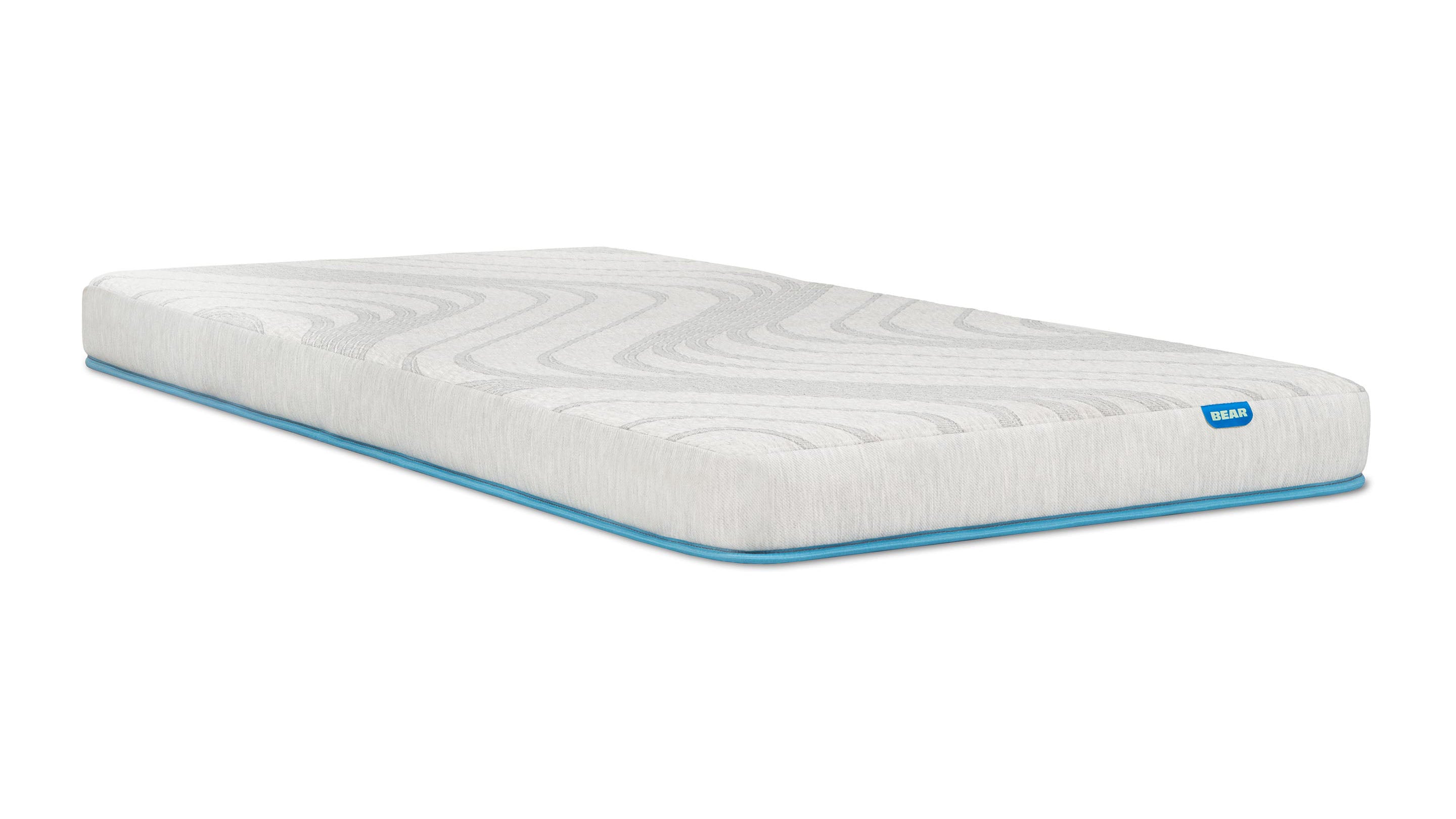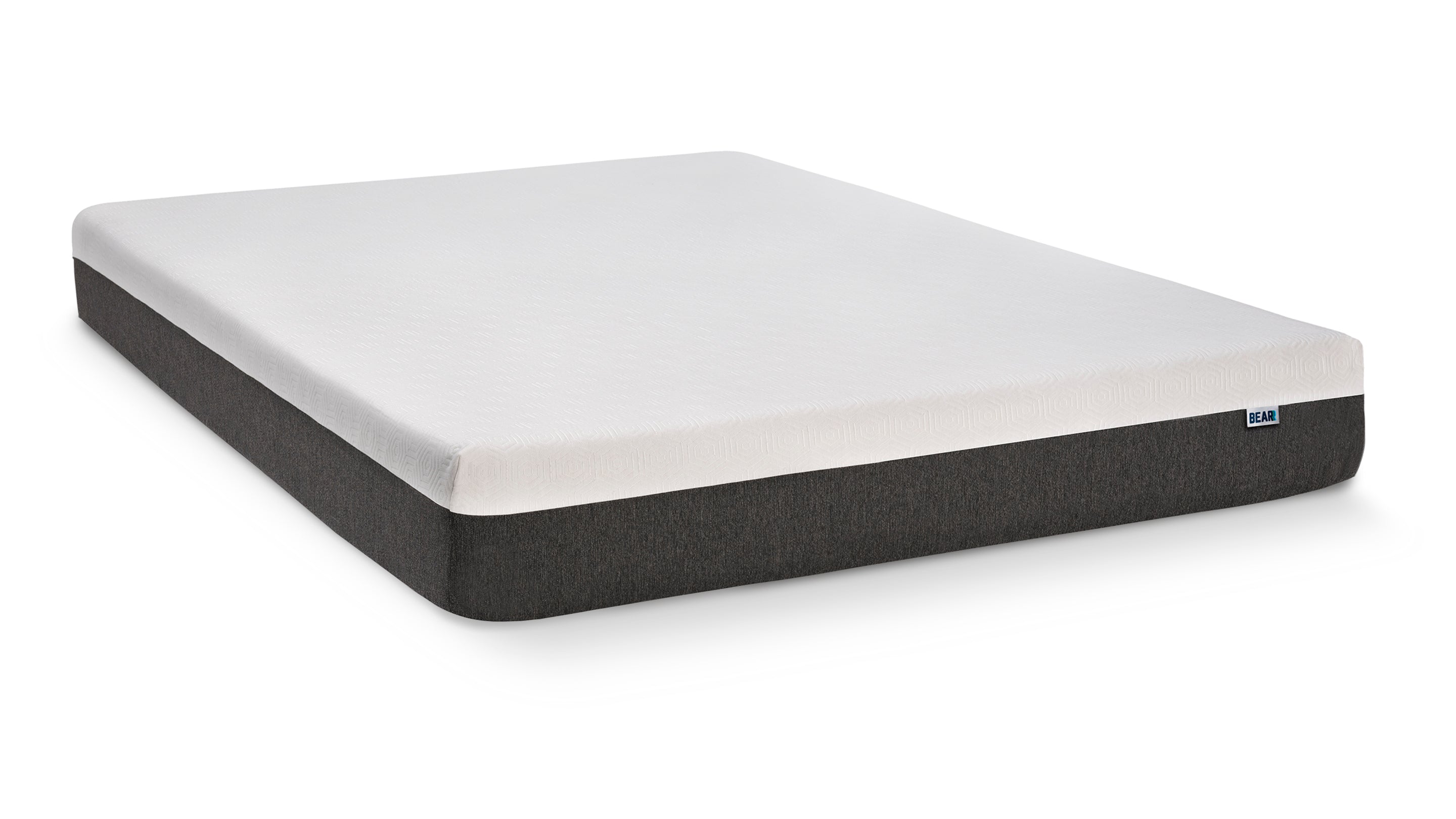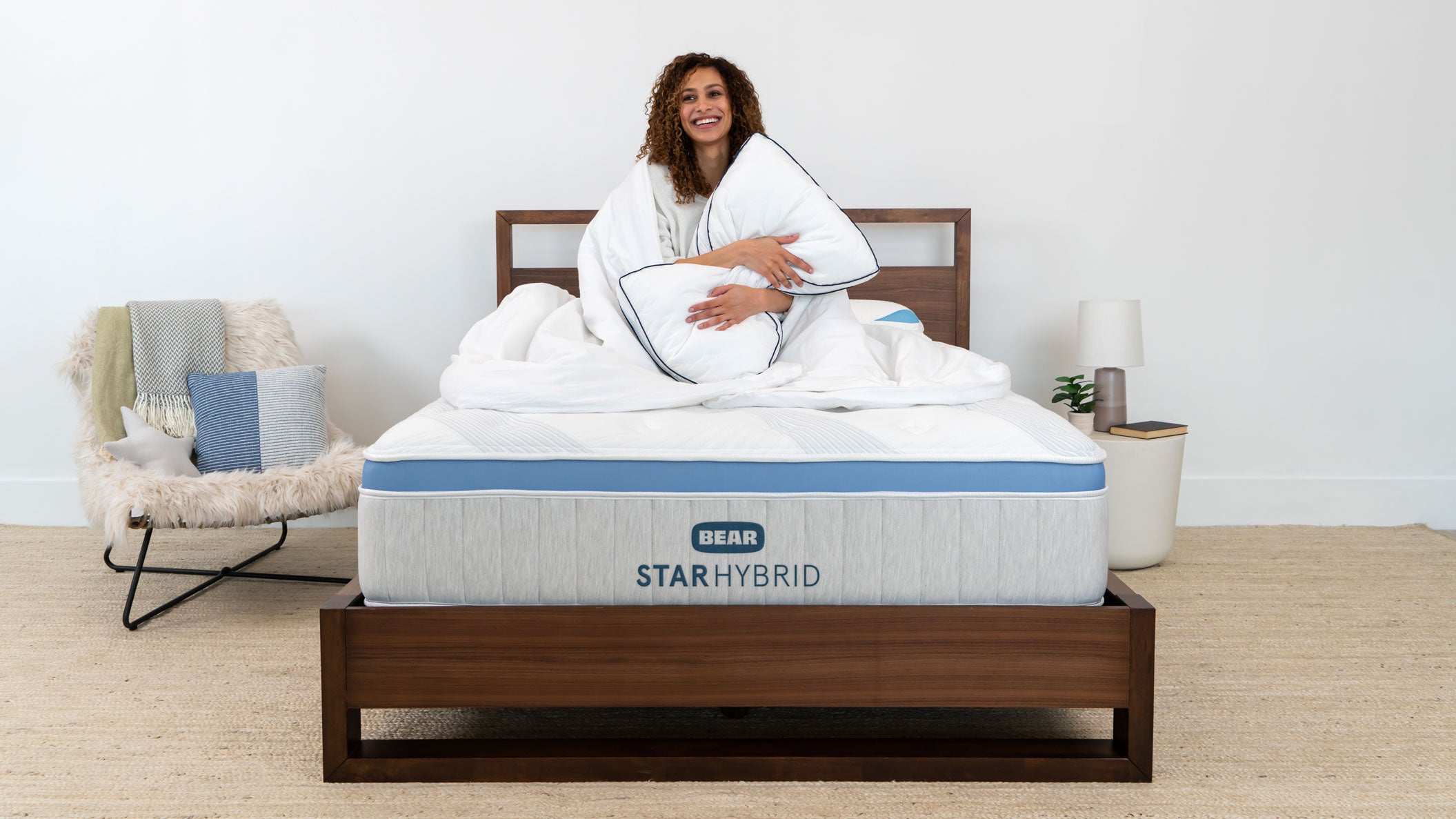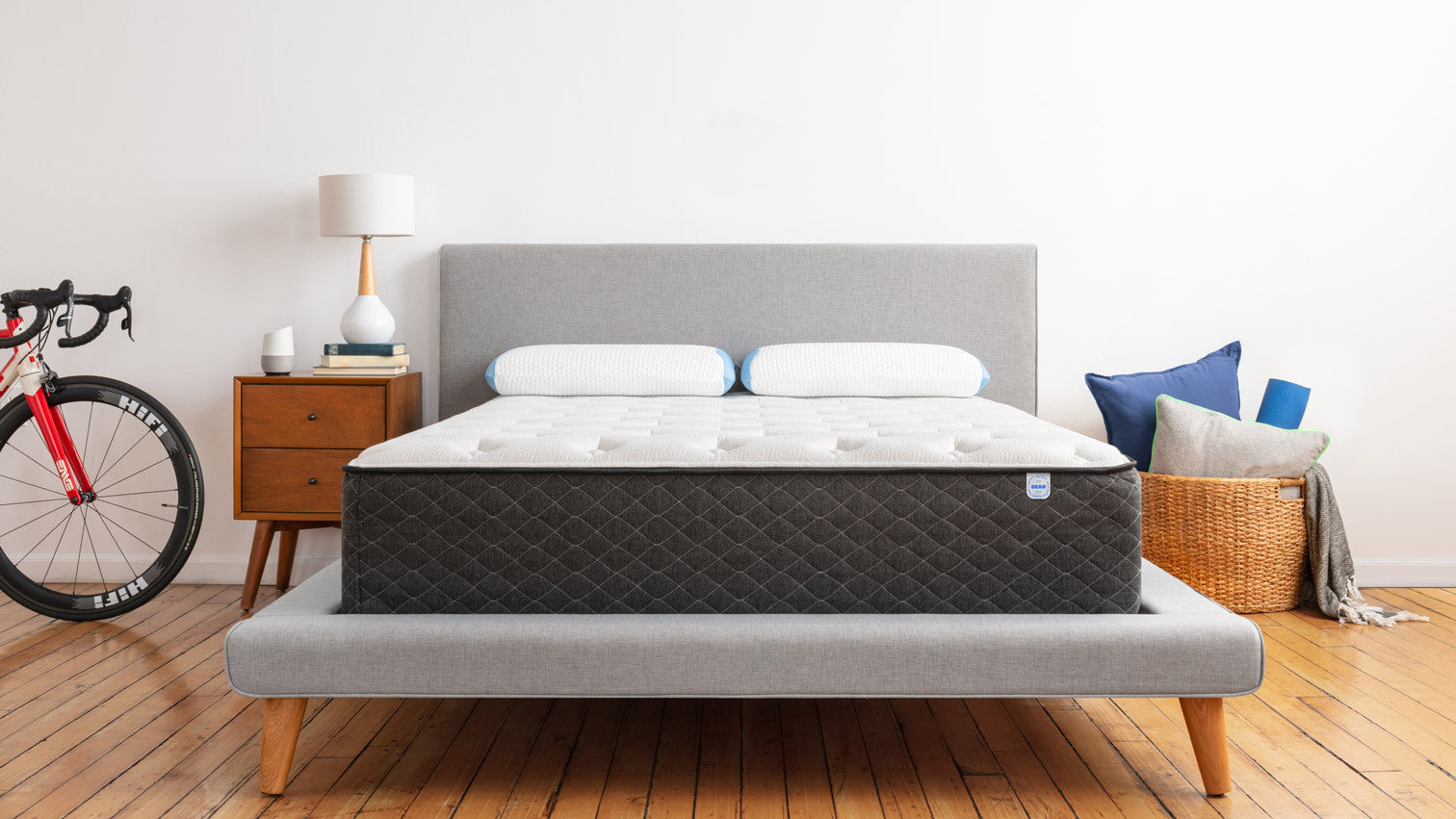We wouldn’t wish chronic back pain on our worst enemies — especially the kind of back pain that makes you toss and turn all night.
While you can’t get a replacement back (at least not yet), there are lifestyle changes you can make — from practicing good posture to getting regular massages — that will help relieve your pain and, hopefully, improve your day-to-day.
But today, we’re going to focus on one particular lifestyle change: your sleeping position.
How to Sleep With Back Pain: 5 Sleeping Positions You Should Try
There’s no arguing that back pain makes getting a good night’s sleep nearly impossible. But did you know poor sleep posture can exacerbate your pain? And, who knows — your sleep posture could even be the root of your back pain!
Whatever the cause of your pain, here are a handful of sleeping positions that will help you sleep through the night and (with any luck) improve your back pain overall.
1. Lay on Your Back With a Pillow Under Your Knees
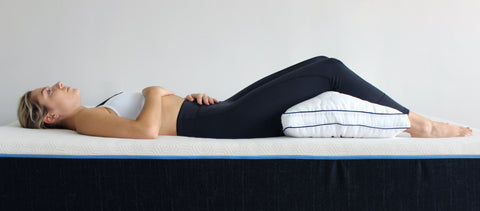
If you’re generally a back sleeper and aren’t trying to change that fact, you can put a pillow or bolster under your knees to take some of the pressure off your spine.
The pillow helps maintain the natural curvature of your spine while sleeping on your back helps distribute your weight evenly and take any unnecessary strain away from your pressure points. Sleeping this way could also improve your overall head, neck and spine alignment, which may provide additional relief from chronic back pain.
Pro-tip: If the knee support isn’t quite enough for you, we recommend rolling up a small towel and placing it under your lower back for added support!
2. Try the Fetal Position
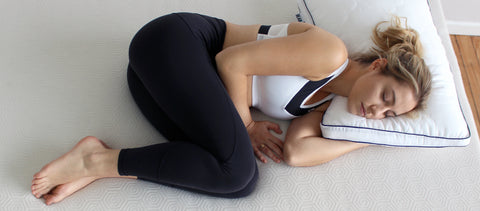
We all know the fetal position, but you probably didn’t know it can help with back pain, especially if you have a herniated disc.
Discs — the soft cushions between vertebrae — can get pushed out of place, causing nerve pain and spinal weakness. By sleeping in the fetal position, your spine will naturally curve and open up the space between your vertebrae, relieving any pain or pressure on your discs.
3. Do the Fetal Position 2.0 (With Added Pillow)
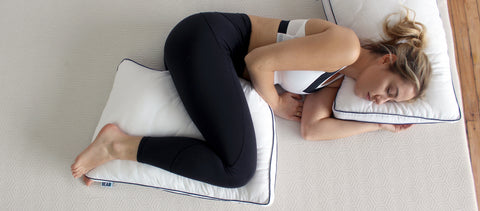
Many of us sleep on our sides. Unfortunately, side sleepers might experience lower back pain or an out-of-whack spine.
Luckily, there’s an easy fix.
Next time you go to sleep on your side, pull your knees up a bit and place a pillow or two between them. Doing so raises your upper leg, which will keep your hips, pelvis and spine in their natural alignment.
You should also consider placing a small pillow, towel or other space-filler in the gap between the mattress and your waist for additional spinal support. We also encourage you to not always sleep on the same side as doing so can cause muscle imbalances and even scoliosis.
4. Lay Face Down With a Pillow Under the Stomach

If you are a stomach sleeper… well, don’t be surprised if you have back pain. Sleeping on the stomach often adds stress to the neck since the head is usually turned to the side, which can mess with the alignment of your spine and neck.
But, we understand everyone has their preferred sleeping position, and sometimes people have trouble sleeping in other ways.
So, if you’re a die-hard stomach sleeper but need help relieving nightly back pain, there is a solution: Sleep with a thin pillow underneath your tummy and hips to relieve pressure from your back. This position can be particularly comfortable for people with a herniated disc or degenerative disc disease.
If you choose to sleep in this position, you may find you don’t want or need to use a pillow under your head — just do whatever feels best for you.
And by the way, if you are having neck pain as a stomach sleeper, try rolling up a towel or positioning a pillow so you can lay with your head straight down without blocking your breathing. You could even invest in a donut pillow, like the kind they use on massage tables.
5. Sleep in a Reclined Position
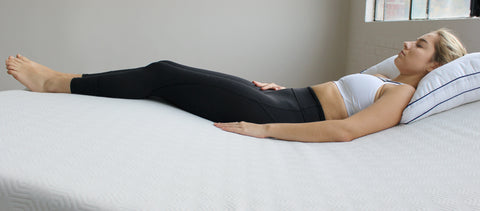
If you find your back pain goes away if you sleep slightly propped up or in a reclining chair, you may want to sleep in a reclining position all the time.
That being said, we aren’t recommending you sleep in a chair; it’s not a wise move for back pain relief. Instead, you may want to invest in the Bear Adjustable Base or another adjustable bed frame so you can have the support of your mattress and the pain-relieving recliner position.
If you do find sleeping in this reclined position takes major pressure off your back, you may want to see your doctor about isthmic spondylolisthesis, a condition where vertebrae slip forward and on top of the one below it.
But Remember, Sleeping Without Back Pain Requires Extensive Lifestyle Changes
If changing your sleeping position hasn’t completely cured your back pain, don’t fret.
Though sleeping in a position that encourages proper spinal alignment and causes pressure-point relief can make an enormous difference when sleeping with back pain, there are other changes you can and should make.
For example, regular core strengthening exercises can help ease back pain, and light yoga before bed can help not only relieve lower back pain but also relieve stress for a better night’s sleep.
But if you’re still experiencing back pain night after night, your mattress might not be giving your back the support it needs. So, if all else fails, it may be time for a new mattress.
(Psst! If you aren’t sure what type of mattress you need, try our new guide!)
Back pain can make doing day-to-day activities painful and inconvenient. To make it worse, if you’re experiencing chronic back pain while sleeping, chances are you aren’t getting enough sleep.
So, try a new sleeping position, get a different mattress or incorporate some stretches into your daily routine — whatever it takes to ease your back pain and ensure you’re getting the sleep you need!
